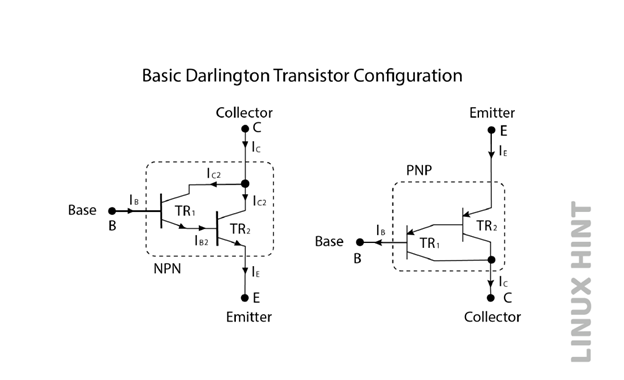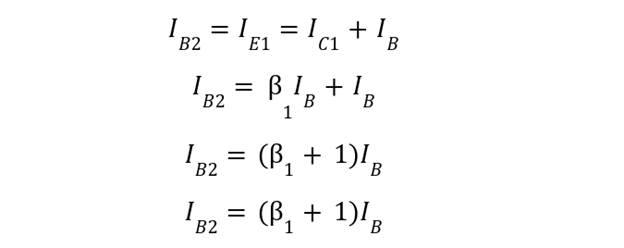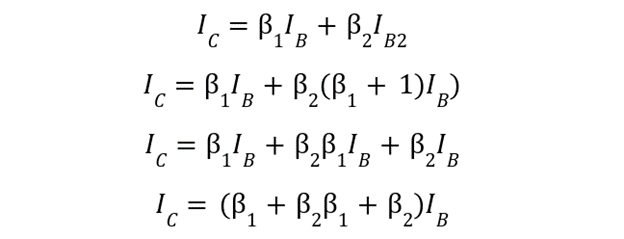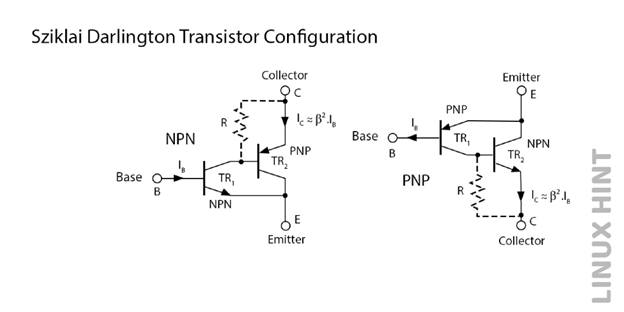Darlington transistors and sziklai transistors make use of two transistors connected. These transistor pair-based configurations have higher current gains, and they offer better amplification and current switching functions.
Darlington Transistors
Darlington transistors consist of two interconnected transistor pairs and are named after its inventor, Sydney Darlington. The Darlington transistors have higher current gains than regular transistors. The transistors can be NPN or PNP types. The circuit diagrams for the Darlington pair comprising NPN and PNP transistors are shown below:

Consider the case of Darlington transistors with NPN transistors. The TR1 is the first transistor emitter that supplies the base TR2 which is the base of the second transistor. The collector current from the above configuration is given as:
The collector current is defined as the beta multiplication of the base current, therefore:
The base current of the second transistor ‘IB2’ equals the emitter current of the first transistor ‘IE1’:
Substituting ‘IB2’ in collector current equation for ‘IC’:
The above expression provides net collector current expression for Darlington transistors.
Sziklai Pair
The term, “Sziklai pair” is used most often to describe the circuit that includes “Sziklai compound pair” or “Sziklai complementary pair” George Clifford Sziklai invented the Sziklai pair, and therefore the circuit is named after his inventor. To achieve very high levels of gain, the Sziklai pair circuit uses a topology that is very similar to that of the Darlington and offers a comparable beta-boosting arrangement.
Sziklai Pair arrangement (PNP) follows similarity in design to the Darlington pairs, a bypass resistor can also be used in its configuration just like Darlington configurations.
To facilitate switch-off, a bypass resistor is included, and the base-emitter capacitance cannot discharge without the resistor. Its inclusion allows the capacitor’s charge to discharge, which speeds up the turn-off process. It is recommended to include this resistor in the design, but if speed is not a concern, it may be skipped. This is true unless cost and component count are kept to a minimum.
Gain for Sziklai pair
The Sziklai pair or compound pair’s gain is extremely close to that of the Darlington, although it is not the same. The following formula determines the gain of the Darlington pair:
Since Q2 does not contribute individually, the gain for the Sziklai pair behaves differently, therefore:
We get the more standard equation that can be used for both the Darlington and Sziklai pairings if the variables Q1 and Q2 are omitted.
Conclusion
Darlington transistor pairs provide improved current gains and current switching capabilities. Sziklai pair offers a complementary design to Darlington pairs with the same beta boosting gains. They require only one diode’s voltage drop, as compared with Darlington pairs requiring two voltage drops for similar operations.







